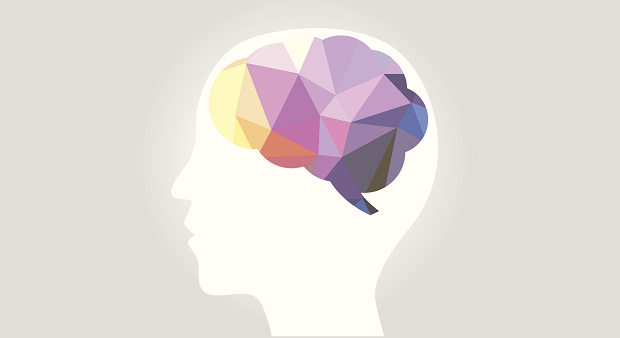
By now the amount of ink spilled to try to explain or understand Donald Trump is incalculable. And for good reason. There has not been a candidate who has challenged political norms or explicitly spewed such bigotry in recent memory. So we should write, and think, and talk about Trump and his followers for lots of important reasons. Not least of which is that Trump’s platform is largely built on divisive and racist ideologies that are relevant to the work of diversity and inclusion practitioners. So in this post, I want to share some highlights from what I think is the best explanation for Trump that I have read so far. The article I’ll be referencing, “Understanding Trump”, is by cognitive scientist and unconscious bias expert, Dr. George Lakoff. I highly recommend you read it for yourself if you can, but I’ll give you some of the highlights here.
Unlike most of the political commentary on the unique rise of Trump, which usually center on his lack of policy, ability to stir up people’s hatred, and his asymmetry with typical Republican talking points, Lakoff tries to explain Trump and his followers using basic principles of neuroscience. In trying to answer the question of what drives the respective differences of our two major political parties, Lakoff writes,
The answer came from a realization that we tend to understand the nation metaphorically in family terms: We have founding fathers. We send our sons and daughters to war. We have homeland security. The conservative and progressive worldviews dividing our country can most readily be understood in terms of moral worldviews that are encapsulated in two very different common forms of family life: The Nurturing Parent family (progressive) and the Strict Father family (conservative).
In the rest of the blog (which is admittedly long), Lakoff uses these two metaphorical family types—the Nurturing Parent and Strict Father—to explain Trump’s seemingly unexplainable popularity. In the Strict Father family, there is a strong commitment to traditional family structure and gender roles where the father knows best and is the one in charge of carrying out punishment for disobedient children for their own well-being. Disobedient children are seen as undisciplined, lacking personal responsibility, and any deviation from the father’s plan is seen as immoral and deserving of harsh consequences. This is one distinction between the Nurturing Family, which emphasizes community care and social responsibility.
Lakoff’s elaboration on the moral hierarchy of the Strict Father family is also telling,
“The basic idea is that authority is justified by morality (the strict father version), and that, in a well-ordered world, there should be (and traditionally has been) a moral hierarchy in which those who have traditionally dominated should dominate. The hierarchy is: God above Man, Man above Nature, The Disciplined (Strong) above the Undisciplined (Weak), The Rich above the Poor, Employers above Employees, Adults above Children, Western culture above other cultures, America above other countries. The hierarchy extends to: Men above women, Whites above Nonwhites, Christians above non-Christians, Straights above Gays.”
Lakoff goes on to describe exceptions and variations of these patterns, but his ultimate point is that the deeply held moral beliefs about how families—and the world—should be run is largely tied to ingrained neural circuits in our brain, ingrained over time. And he argues that Trump—knowingly and unknowingly—uses these neural circuits as “mind tricks” to play to people’s unconscious biases and patterned ways of thinking about the world. This is why Trump, and his supporters, could care less about arguments around policy or political experience. They’re ultimately looking for a strict father figure who will offer them success, authority, power and “winning.” Lakoff describes ten of these mind tricks in detail but I only want to highlight a few for those who don’t have time to read the whole thing:
- Repetition. Words are neurologically linked to the circuits that determine their meaning. The more a word is heard, the more the circuit is activated and the stronger it gets, and so the easier it is to fire again. Trump repeats. Win. Win, Win. We’re gonna win so much you’ll get tired of winning.
- Framing: Crooked Hillary.Framing Hillary as purposely and knowingly committing crimes for her own benefit, which is what a crook does. Repeating makes many people unconsciously think of her that way, even though she has been found to have been honest and legal by thorough studies, by the right-wing Bengazi committee (which found nothing) and the FBI (which found nothing to charge her with, except missing the mark ‘(C)’ in the body of 3 out of 110,000 emails). Yet, the framing is working.
- Well-known examples: When a well-publicized disaster happens, the coverage activates the framing of it over and over, strengthening it, and increasing the probability that the framing will occur easily with high probability. Repeating examples of shootings by Muslims, African-Americans, and Latinos raises fears that it could happen to you and your community — despite the miniscule actual probability. Trump uses this to create fear. Fear tends to activate desire for a strong, strict father — namely, Trump.
- There is also a metaphor that A Country Is a Person and a metonymy of the President Standing for the Country. Thus, Obama, via both metaphor and metonymy, can stand conceptually for America. Therefore, by saying that Obama is weak and not respected, it is communicated that America, with Obama as president, is weak and disrespected. The inference is that it is because of Obama.
Lakoff ends his piece by appealing to progressives and the media, to take seriously his argument about the nature of our brains and how that shapes political allegiance. But one could become discouraged or defeatist knowing that such levels of bigotry is embedded in the make-up of our brains—and therefore, what can be done about it?
Well the hopeful answer, which Lakoff hints at, is that the mind is not only powerful, but it is also plastic—in that, in the same ways patterned ways of thinking are ingrained, they can also be reversed and transformed over time. This is why counter-narratives, positive imagery, and organic relationships with people who can challenge our beliefs are so vital for a more inclusive world.
We should be just as vigilant in creating more inclusive, adaptive, and diverse neural pathways in our minds that our unconscious bias and bodies automatically spring to the defense of those who are excluded and hated. The natural function of our minds is to store and make sense of all of our life’s experiences, so our work is to make sure we fill it with as many positive stories, images, and experiences as we can to live as inclusively as possible. The mind and unconscious are incredibly powerful—for both good and evil—we should not take them lightly.


















